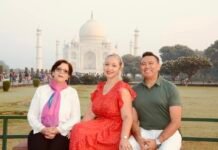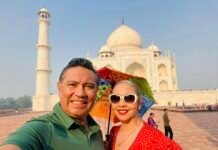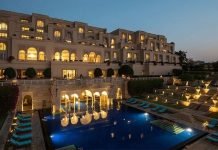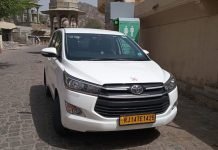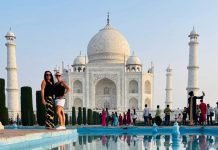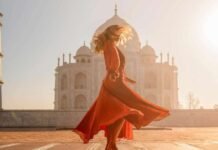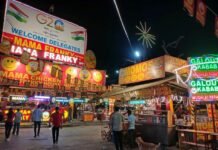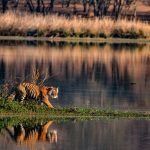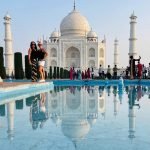The Taj Mahal is one of the most iconic and photographed landmarks in India. It is a masterpiece of Mughal architecture and is considered to be one of the most beautiful buildings in the world. If you are a photography enthusiast, then you must visit the Taj Mahal to capture its beauty in your camera. However, to get the best shots, it is important to visit the monument at the right time. The best time to visit Taj Mahal for photography is during the early morning hours just after sunrise or during the late afternoon hours just before sunset.
The best time to visit the Taj Mahal for photography is during the early morning hours just after sunrise or during the late afternoon hours just before sunset. The light during these times is soft and diffused, creating a warm and golden glow on the monument, making it ideal for photography.
you also like to read: Private Car Delhi to Agra: know before you go
During the early morning hours, the Taj Mahal is bathed in a soft pinkish-orange light, which creates a warm and romantic atmosphere, making it ideal for photography. The light during this time is soft and diffused, which creates a beautiful and even illumination on the monument. This is the best time to visit Taj Mahal for photography clicks in all its glory, with its intricate details and designs standing out against the soft light in the background.
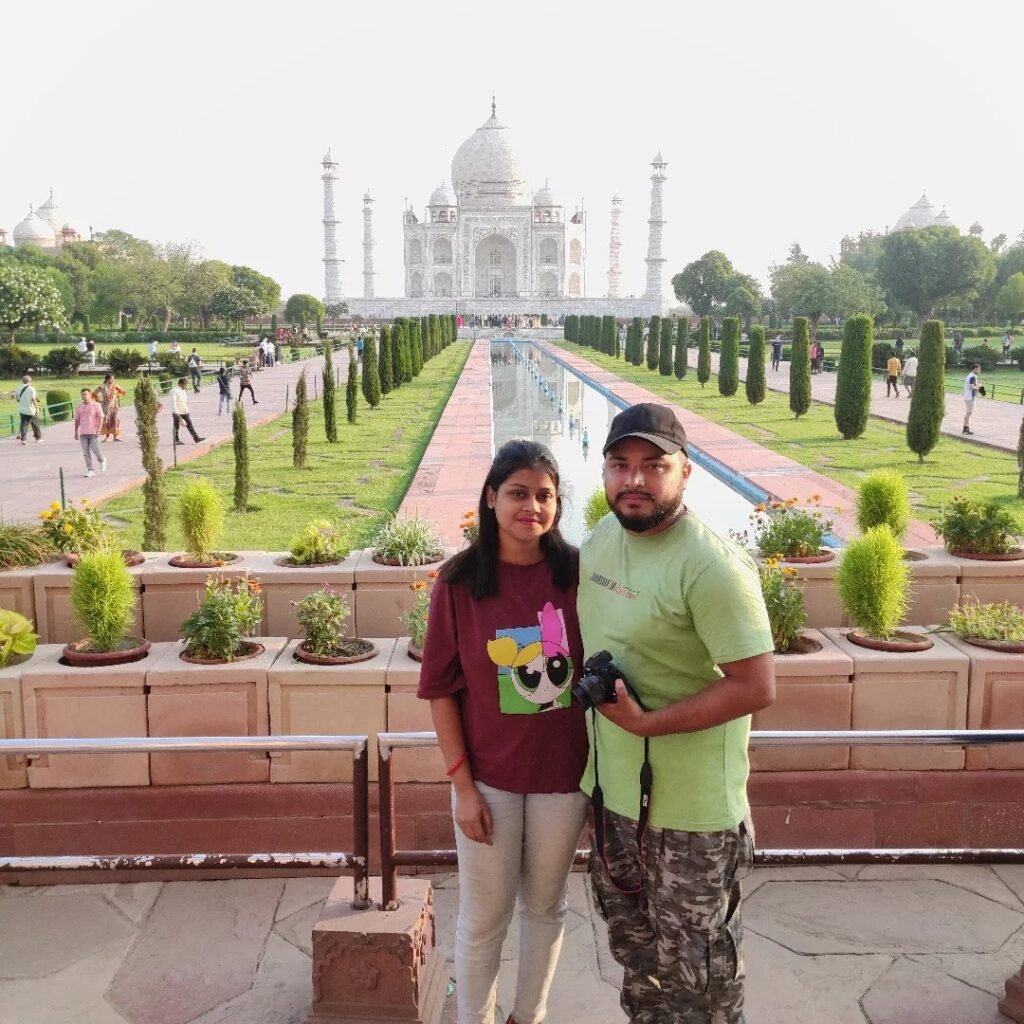
Delhi Agra one day tour by Car – Book with Local Expert From ₹ 6,500
Delhi Agra one day tour by Car Inclusive of neat and clean Car with Experienced Driver + Local Live Guide on Additional cost – Check Out More!
View Details“The best time to visit Taj Mahal for photography is during the early morning hours just after sunrise or during the late afternoon hours just before sunset.”
Similarly, during the late afternoon hours, the Taj Mahal is bathed in a warm golden light, which creates a beautiful contrast with the blue sky in the background. This light is ideal for capturing the intricate details and designs on the monument, making it another great time for photography. The warm light during this time creates a beautiful and dramatic effect, making the Taj Mahal look even more stunning.
It is important to note that the middle of the day is not the best time to visit the Taj Mahal for photography as the harsh sunlight can create harsh shadows and make the monument appear flat and uninteresting in photographs. It is best to avoid visiting the Taj Mahal during this time. Additionally, it is important to keep in mind that the Taj Mahal is closed on Fridays, so it is important to plan the visit accordingly.
The best time to visit the Taj Mahal for photography is during the early morning hours just after sunrise or during the late afternoon hours just before sunset. The light during these times is soft and diffused, creating a warm and golden glow on the monument, making it ideal for photography. It is important to plan the visit accordingly and to avoid visiting during the middle of the day when the sunlight can create harsh shadows. With the right timing and a good camera, you can capture the beauty of the Taj Mahal and create stunning photographs that will last a lifetime.
Taj Mahal photography tips
The Taj Mahal is a stunningly beautiful monument that is a photographer’s dream. It is one of the most photographed landmarks in the world and is known for its incredible architecture and intricate details. The best time to visit Taj Mahal for photography is during the early morning hours just after sunrise or during the late afternoon hours just before sunset. Here are some Taj Mahal photography tips that can help you capture the beauty of this iconic monument:
Timing: The best time to visit the Taj Mahal for photography is during the early morning hours just after sunrise or during the late afternoon hours just before sunset. During these times, the light is soft and diffused, creating a warm and golden glow on the monument, which makes it ideal for photography. Plan your visit accordingly and arrive early to get the best light.

.
Equipment: To capture the beauty of the Taj Mahal, you will need the right equipment. A tripod is essential to stabilize your camera and avoid camera shake, particularly during low light conditions. A wide-angle lens can help you capture more of the monument, while a zoom lens can help you capture detail and texture.
Composition: Experiment with different angles and perspectives to capture the Taj Mahal from unique vantage points. Try getting low to the ground or shooting from a higher elevation to add depth and dimension to your photos. Additionally, try framing the Taj Mahal with other elements in the foreground, such as trees or people, to add interest to your photos.
Patience: The Taj Mahal can get crowded, so it is important to be patient and wait for the right moment to capture the perfect shot. Wait for people to move out of the way or try different angles to avoid unwanted elements in your photos.
Respect: Finally, it is important to respect the monument and the people around you. Avoid climbing on the Taj Mahal or its surrounding structures, and be mindful of other visitors who may also want to take photos.
The Taj Mahal is a photographer’s paradise, and with the right techniques and equipment, you can capture stunning photographs that will last a lifetime. Remember to visit during the best time to visit Taj Mahal for photography, use a tripod to stabilize your camera, experiment with different angles and perspectives, be patient, and respect the monument and the people around you. With these Taj Mahal photography tips, you are sure to create beautiful memories that will last a lifetime.
For photography enthusiasts visiting the Taj Mahal, it is recommended to plan your visit during the early morning hours shortly after sunrise or late afternoon hours just before sunset. These times offer the best lighting conditions, with soft and diffused light that creates a warm and golden glow on the monument, making it perfect for photography. Arriving early or staying late can help you take advantage of the optimal lighting conditions and capture stunning shots of the Taj Mahal. The best time to visit Taj Mahal for photography is during the early morning hours just after sunrise.
“it is recommended to plan your visit during the early morning hours shortly after sunrise or late afternoon hours just before sunset. These times offer the best lighting conditions, with soft and diffused light that creates a warm and golden glow on the monument, making it perfect for photography.”
How much does it cost to tour the Taj Mahal?
The cost of the Taj Mahal Photo Tour depends on several factors, such as nationality, age, and the type of ticket purchased. For foreign tourists, the entrance fee is INR 1300 (approximately $18) per person, while for Indian nationals, the fee is INR 50 (less than $1) per person. Children under the age of 15 can enter for free. Additionally, there are separate fees for tour guides, photography, and videography.

.
It is important to note that the Taj Mahal is closed on Fridays, so it is essential to plan your visit accordingly. As mentioned earlier, the best time to visit Taj Mahal for photography is during the early morning hours just after sunrise, or during the late afternoon hours just before sunset. During these times, the light is soft and diffused, creating a warm and golden glow on the monument, making it ideal for photography.
“The best time to visit Taj Mahal for photography is during the winter months of November to February. During this time, the weather is pleasant with cool temperatures, making it comfortable for visitors to explore the monument.”
It is recommended to purchase tickets in advance to avoid long queues and delays. Tickets can be purchased online or at the ticket counters located near the entrance. It is important to carry valid ID proof and adhere to the dress code, which requires visitors to dress modestly and cover their heads.
The cost to tour the Taj Mahal depends on several factors, and it is recommended to purchase tickets in advance to avoid delays. The best time to visit Taj Mahal for photography is during the early morning hours just after sunrise or during the late afternoon hours just before sunset. With proper planning and preparation, you can enjoy a memorable visit to this iconic landmark and capture stunning photographs that will last a lifetime.
Photography charges at charges
The Taj Mahal is a photographer’s paradise, and visitors are allowed to take photographs of the monument from outside and inside. However, there are separate photography charges for those who wish to take professional or commercial photographs inside the monument. The photography charges at the Taj Mahal start at INR 200 (approximately $3) per camera for still photography and INR 1000 (approximately $14) per camera for video photography. The charges are subject to change, so it is best to check the official website for the latest updates.
As mentioned earlier, the best time to visit Taj Mahal for photography is during the early morning hours just after sunrise, or during the late afternoon hours just before sunset. During these times, the light is soft and diffused, creating a warm and golden glow on the monument, making it ideal for photography.
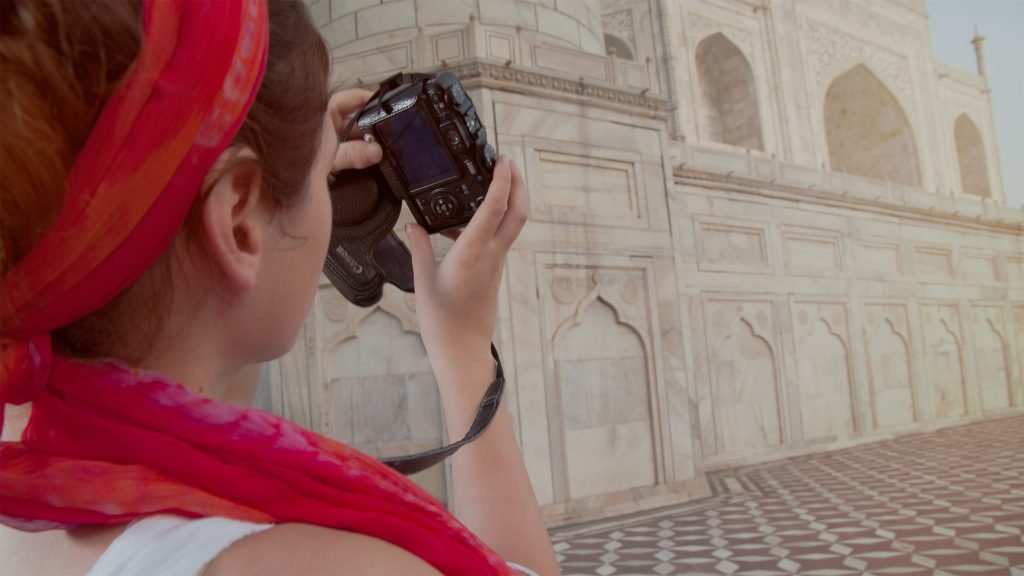
.
Visitors are allowed to take photographs from designated areas inside the monument, and it is important to follow the rules and regulations set by the authorities.
It is recommended to carry your own camera and equipment if you plan to take photographs inside the Taj Mahal. However, tripods and other professional equipment are not allowed inside the monument. Additionally, it is important to be respectful of other visitors and avoid obstructing their view while taking photographs.
You also like to read: Legacy of Love: Discovering the Remarkable Children of Mumtaz Mahal, the Beloved Wife of Shah Jahan
The photography charges at the Taj Mahal are reasonable and allow visitors to capture beautiful memories of this iconic monument. The best time to visit Taj Mahal for photography is during the early morning hours just after sunrise or during the late afternoon hours just before sunset. With proper planning and adherence to the rules and regulations, you can capture stunning photographs that will last a lifetime.


